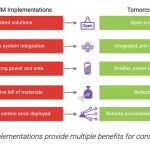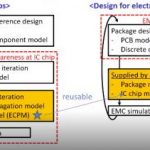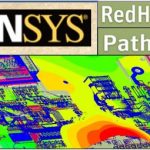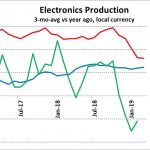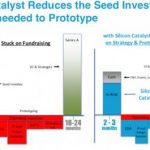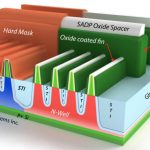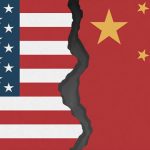As Uber’s initial public offering arrives this is a good moment to consider what kind of employment model for the future we all, as employees and employers, would prefer to adopt: Amazon or Uber?
One of my sons has interviewed with Amazon. The other has his Amazon moment today. My across-the-street neighbor works for Amazon Web Services. I don’t know anyone that works for or has “interviewed” with Uber – though I have spoken with Uber drivers all over the world.
It is worth considering the two different value propositions posed by these pivotal employers and purported economic engines. Amazon is already the second largest employer in the U.S. with 566,000 employees. Uber employs more than 22,000 people at headquarters or in support roles along with more than three million drivers.
Municipalities and states vie over incentives to entice Amazon to open facilities (headquarters, distribution centers, server farms) in their areas thereby bringing employment. Amazon leverages that local support to demand concessions such as a greening of existing power grids, for example, in the case of server farms installations.
Amazon is famous for its 14 leadership principles:
1. Customer Obsession
Leaders start with the customer and work backwards. They work vigorously to earn and keep customer trust. Although leaders pay attention to competitors, they obsess over customers.
2. Ownership
Leaders are owners. They think long term and don’t sacrifice long-term value for short-term results. They act on behalf of the entire company, beyond just their own team. They never say “that’s not my job.”
3. Invent and Simplify
Leaders expect and require innovation and invention from their teams and always find ways to simplify. They are externally aware, look for new ideas from everywhere, and are not limited by “not invented here”. Because we do new things, we accept that we may be misunderstood for long periods of time.
4. Are Right, A Lot
Leaders are right a lot. They have strong judgement and good instincts. They seek diverse perspectives and work to disconfirm their beliefs.
5. Learn and Be Curious
Leaders are never done learning and always seek to improve themselves. They are curious about new possibilities and act to explore them.
6. Hire and Develop the Best
Leaders raise the performance bar with every hire and promotion. They recognise people with exceptional talent and willingly move them throughout the organisation. Leaders develop leaders and are serious about their role in coaching others. We work on behalf of our people to invent mechanisms for development like Career Choice.
7. Insist on the Highest Standards
Leaders have relentlessly high standards – many people may think these standards are unreasonably high. Leaders are continually raising the bar and driving their teams to deliver high quality products, services and processes. Leaders ensure that defects do not get sent down the line and that problems are fixed so they stay fixed.
8. Think Big
Thinking small is a self-fulfilling prophecy. Leaders create and communicate a bold direction that inspires results. They think differently and look around corners for ways to serve customers.
9. Bias for Action
Speed matters in business. Many decisions and actions are reversible and do not need extensive study. We value calculated risk taking.
10. Frugality
Accomplish more with less. Constraints breed resourcefulness, self-sufficiency and invention. There are no extra points for growing headcount, budget size or fixed expense.
11. Earn Trust
Leaders listen attentively, speak candidly, and treat others respectfully. They are vocally self-critical, even when doing so is awkward or embarrassing. Leaders do not believe their or their team’s body odour smells of perfume. They benchmark themselves and their teams against the best.
12. Dive Deep
Leaders operate at all levels, stay connected to the details, audit frequently, and are sceptical when metrics and anecdote differ. No task is beneath them.
13. Have Backbone; Disagree and Commit
Leaders are obligated to respectfully challenge decisions when they disagree, even when doing so is uncomfortable or exhausting. Leaders have conviction and are tenacious. They do not compromise for the sake of social cohesion. Once a decision is determined, they commit wholly.
14. Deliver Results
Leaders focus on the key inputs for their business and deliver them with the right quality and in a timely fashion. Despite setbacks, they rise to the occasion and never compromise.
These principles serve as the framework for an interview gauntlet known as “having a loop.” It’s a daunting process that not all are able to conclude successfully.
Uber’s CEO, Dara Khosrowshahi, famously reworked Uber’s cultural code when he joined the company:
Uber’s Cultural Norms
We build globally, we live locally.We harness the power and scale of our global operations to deeply connect with the cities, communities, drivers and riders that we serve, every day.
We are customer obsessed. We work tirelessly to earn our customers’ trust and business by solving their problems, maximizing their earnings or lowering their costs. We surprise and delight them. We make short-term sacrifices for a lifetime of loyalty.
We celebrate differences. We stand apart from the average. We ensure people of diverse backgrounds feel welcome. We encourage different opinions and approaches to be heard, and then we come together and build.
We do the right thing. Period.
We act like owners. We seek out problems and we solve them. We help each other and those who matter to us. We have a bias for action and accountability. We finish what we start and we build Uber to last. And when we make mistakes, we’ll own up to them.
We persevere.We believe in the power of grit. We don’t seek the easy path. We look for the toughest challenges and we push. Our collective resilience is our secret weapon.
We value ideas over hierarchy. We believe that the best ideas can come from anywhere, both inside and outside our company. Our job is to seek out those ideas, to shape and improve them through candid debate, and to take them from concept to action.
e make big bold bets. Sometimes we fail, but failure makes us smarter. We get back up, we make the next bet, and we go!
The new ethos at Uber’s headquarters may or may not be conveyed to its drivers. Maybe it should be.
Given the rising volume of hiring taking place at Amazon it is hard to ignore the company’s influence on hiring practices, the economy and even the environment. That doesn’t mean all is rosy at Amazon. Amazon continues to face obstacles of its own making including resistance to economic transformation in New York – where its headquarters bid was ultimately rejected – and claims of employment discrimination and retaliation. Uber has faced and continues to face similar challenges.
Still, Amazon is rapidly supplanting IBM, Xerox, AT&T, or even the U.S. Postal Service as an attractive and sought after place of employment. As has always characterized such employment, a job at Amazon could define one’s career path for a lifetime and ensure lifelong financial security with all of the related benefits.
In stark contrast to the prospect of a job at Amazon, Uber offers a very different employment prospect. I am not writing, of course, of the 22,000 headquarters and support personnel working at Uber. I am addressing the more than three million Uber drivers laboring on the expanding Uber platform – which now includes food delivery – around the world.
Uber offers the ultimate ad hoc employment opportunity with nary an interview at all without any of the security or benefits of a traditional “desk” job. Uber drivers may be fully or partially employed, depending on the amount of hours they work.
While the comparison of Amazon’s interview process with Uber’s ad hoc employment proposition is unfair it highlights two disparate paths to building value. Uber is supporting a bloated valuation freighted with billions of dollars in insurmountable losses. Amazon has created a solid foundation from a massive and expanding infrastructure supporting a global digital and physical delivery platform.
mazon has built a fortress of customer convenience and satisfaction surrounded by a moat of logistical expertise. Uber has constructed a sandcastle of loss-producing taxi rides on the backs of itinerant and under-compensated drivers. The recent driver strike on the eve of the IPO is but a hint of trouble to come.
The future of employment in the U.S. and around the world is at stake in Uber’s IPO today. We will all serve the machines in the future but will we be nothing but lumps of meat guiding vehicles and living hand to mouth? Or will we be masters of the machines and our own destinies – respected and nurtured.
The question goes beyond the prospect of employment. Both Amazon and Uber are of sufficient size to have measurable impacts on the economy and the environment.
Amazon not only takes responsibility for its impact on the environment, in many instances it has sought concessions from government authorities to ensure the provision of green energy sources. Uber, on the other hand, recklessly and ruthlessly violates local regulations and taxes transportation infrastructure while undermining public transportation resources.
Amazon provides living wages and benefits. Uber actively undermines the livelihoods of taxi drivers around the world – with the exception of those markets where the company has sub-contracted with local taxi services.
Both companies pose a burden to transportation infrastructure. Amazon delivery vehicles and delivery agents routinely impede traffic in major cities. Uber has been blamed for worsening traffic conditions in most cities where the company operates. The implications for emissions are obvious.
As Uber executives and investors ponder the long-term viability of the company today it may be time to reconsider the treatment and compensation of Uber drivers. This applies to Lyft, Yandex, DiDi, Heetch and all the rest. Are these companies building fortresses or sandcastles? Are Uber passengers as devoted to Uber as Amazon Prime customers are to Amazon?
Both Uber and Amazon offer convenience and cost savings, but the value proposition for customers, employees, the environment, and the economy are very different. One is sustainable and one is not.


